Of ETOPS NATs and SLOP
Of ETOPS NATs and SLOP
In the golden era of 747s, planes crisscrossed the globe running on 3-4 engines. So, if one engine was lost, no biggie: you had several more to get you where you wanted to go. But, as technology improved, and engines became much more reliable, manufacturers moved to the more fuel efficient two-engine model.
Now, however, if an airliner lost an engine out over the ocean, it would be entirely dependent on that other, single engine to safely get them to a runway.
A bit of a sobering thought!
Thus, ETOPS (Extended-range Twin-engine Operational Performance Standards) was born.
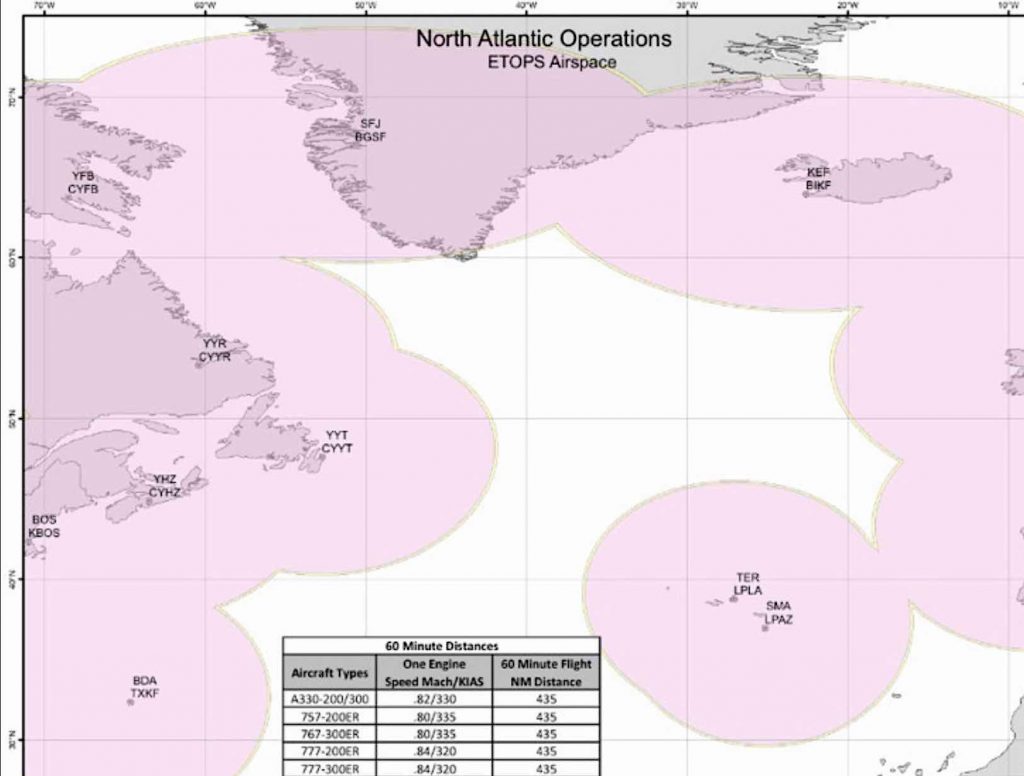
“Extended overwater operations” is considered any area beyond 1-hour flying time to shoreline (or, more precisely, an “adequate airfield”) for a given airplane.
For the 777, this equates to a radius of 435 nautical miles.
Beyond these distances, RADAR is sketchy or nonexistent—though GPS is now replacing ground-based radar with global eyeballs (more on that in our next post!)
Without getting too deep in the weeds, in general, the standard ETOPS certification is for 180 minutes. That is, a twin-engine plane can operate in the extended overwater ETOPS environment, as long as an adequate alternate airport is within 180 minutes at all times. A 15% extension, with a few extra requirements, covers 95% of the globe, as well as all Pacific and Atlantic routes.
Of ETOPS NATs and SLOP
NAT Tracks

Above is an amazing depiction of the world’s flights in 24 hours. Look closely at the US-Europe (North Atlantic) route. Notice that most flights depart from the US at night, to land in the morning in the UK & Europe. Then, most return flights depart in the day to arrive in the US late afternoon/evening. This takes advantage of the times zones each way.
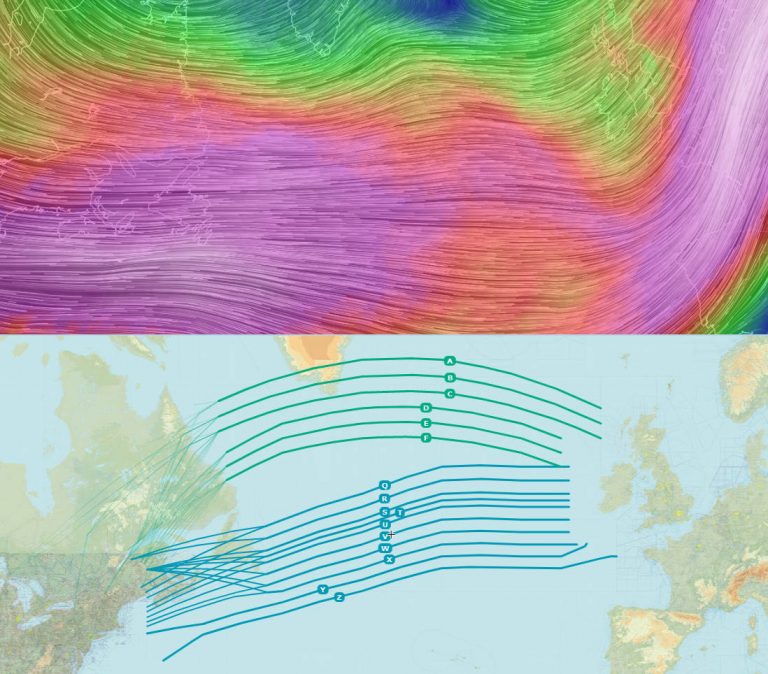
The above composite photo depicts the prevailing winds, and the corresponding North Atlantic (NAT) Tracks. The lower routes take advantage of the prevailing tailwind to travel eastbound, while the upper routes by Greenland take advantage of the lower headwind speeds.
These tracks are published each 24 hours, and most planes will fly these tracks, or some combination of them.
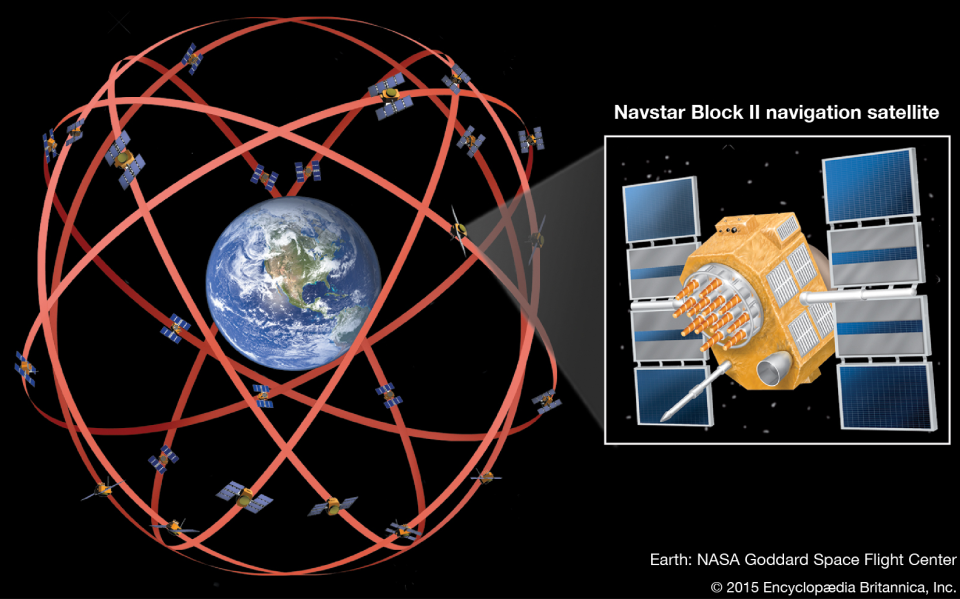
There are other rules for flying these slots (and each airliner is assigned a slot, based on their schedule), though some flights will be augmented from these routes for further efficiency.
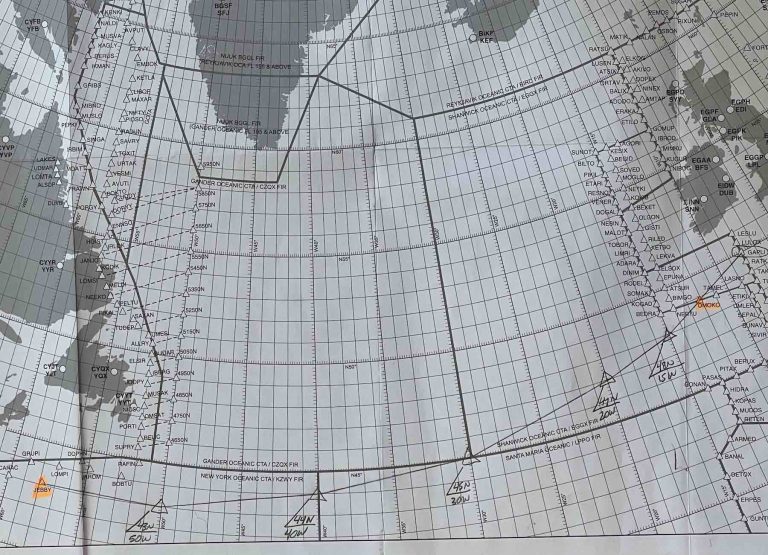
Each route has a permanent waypoint to begin and end (“Coast Out” and “Coast In”), and in the middle, we’ll be using straight Lat/Long waypoints to keep on course. We even use an old-fashioned chart such as the above to “circle and tick” (verifying Lat/Long waypoints as we approach and cross them) our way across the Atlantic.
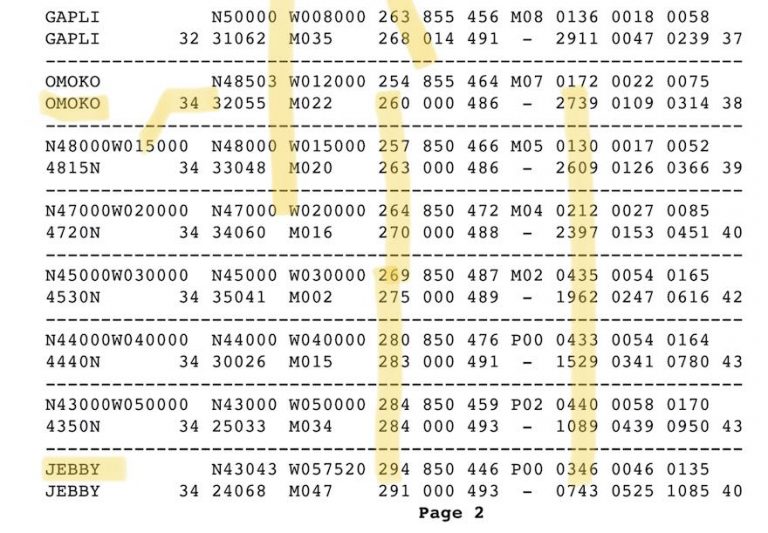
Oh, wanna hear something cool?
FO Esty knew the exact coordinates where the Titanic had sunk, and…
We flew within eyeshot of it!
“I’m flying, Jack!”
No, I really am!! 😂
There I Wuz! Volume 3
Check out this FREE PREVIEW of Cap'n Aux's
Military-themed Volume of his popular "There I Wuz!" Series!
Of ETOPS NATs and SLOP
NATs to PACOTS
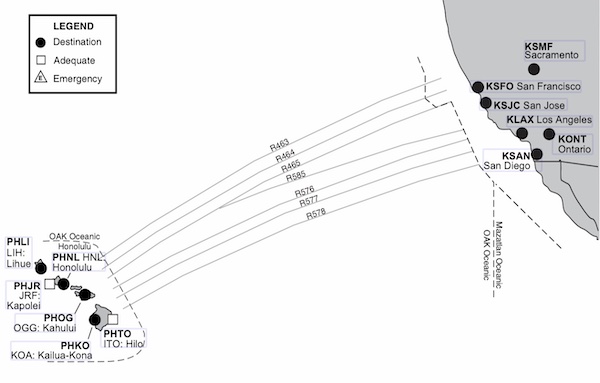
Over on the Pacific/Hawaii side of things, routes are a bit more permanent. We fly, for example, the “Romeo Routes” to/from the Islands. Each route has its own series of waypoints with which to check progress, and report to ATC. This is part of the Pacific Organized Track System (PACOTS).
If winds, turbulence or weather are super bad, we can augment these routes and fly north or south of them as well…requiring us to once again “circle and tick” our way across.
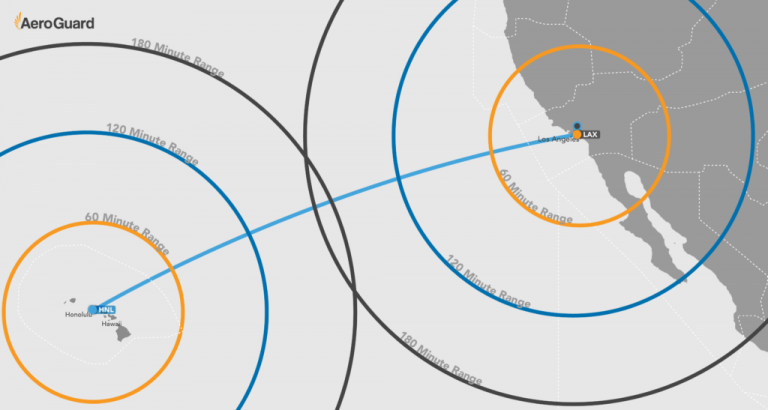
Of ETOPS NATs and SLOP
So Accurate We Need SLOP
Today’s navigation is so accurate, that we actually sometimes need to add some “SLOP” into our navigation. That is, “Strategic Lateral Offset Procedure.”
Basically, an airliner flying certain overwater routes has the option to offset either 1 or 2 nautical miles to the RIGHT of course, in order to, say, avoid wake turbulence from the Heavy aircraft ahead. Or, to simply increase the safety margin, in case someone is inadvertently traipsing down the overwater route the wrong way.

I hope you enjoyed today’s “Techie Lecture” on ETOPS. Next week, we’ve got some more esoteric aviation acronyms to explore!
And, don’t forget, if you ever have any questions or comments, feel free to post them, below. Or, contact me through my social media channels.
Hemisphere Adventures, Blog Buddy Style!

Folks, I gotta tell you, this new gig flying the 777 all over Kingdom Come has literally opened up a whole new world. Readers like you that I’ve corresponded with over the years here, are now just a flight away!
To wit, this past trip to LHR, I got to meet, for the first time, one of our original and most devoted Blog Buddies, Mark R. of England!
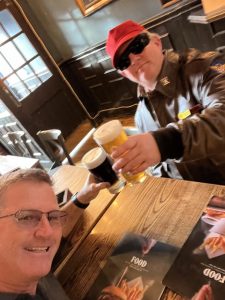





We got to share (several) pints, chat about good times, new and old, and of course I brought him (several) signed copies of some of my books. Not to be outdone, however, Mark surprised me with some wonderful aviation memorabilia—wow!
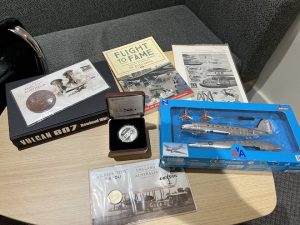
Needless to say, a good time was had by all!
Perhaps I’ll be overnighting in your town next!
Till the next post,
This is Cap'n Aux

Signing Off!
Cleared to Land
Touching Down Next

Next time, we continue our Aviation Acronym Extravaganza with our post,
Of RAIM ADS-B and CPDLC!
Cap'n Aux Social Media Links
- Email: eric@capnaux.com
- Facebook: CapnAux
- Twitter: @capnaux
- Instagram: @capnaux
- Airways Magazine Online: Capnaux
ETOPS Links
- https://en.wikipedia.org/wiki/ETOPS
- Aerosavvy Natracks: http://aerosavvy.com/north-atlantic-tracks/
- https://aviation.stackexchange.com/questions/32852/where-to-download-nats-north-atlantic-tracks-information
- https://www.federalregister.gov/documents/2000/01/21/00-1505/207-minute-extended-range-operations-with-two-engine-aircraft-etops
- https://www.flyaeroguard.com/learning-center/etops-explained/
- 14 CFR Appendix P to Part 121 – Requirements for ETOPS and Polar Operations https://www.law.cornell.edu/cfr/text/14/appendix-P_to_part_121
- Operators May Soon Fly Outside NATracks https://www.ainonline.com/aviation-news/air-transport/2022-02-04/operators-may-soon-fly-outside-north-atlantic-tracks-fl330
Related Links
- https://capnaux.com/the-5g-aviation-problem/
- Hemisphere Adventures! https://capnaux.com/hemisphere-adventures/
- Dancing the Hemispheres https://capnaux.com/dancing-the-hemispheres/
- Maiden Voyage of the Boeing 777 https://capnaux.com/maiden-voyage-of-the-boeing-777/
- Getting Certified on the Boeing 777 https://capnaux.com/whats-it-like-to-get-certified-on-one-of-the-worlds-largest-airliners-the-boeing-777-type-rating/
- Drinking From a Firehose Part 1 https://capnaux.com/drinking-from-a-firehose-part-1/
- Fifi’s Final Flight! https://capnaux.com/fifis-final-flight/
- Cap’n Aux Books https://www.amazon.com/Eric-Auxier/e/B00971H8VW
- Cap’n Aux’s First Solo https://capnaux.com/blogging-in-formation-solo/
- End of an Aviation Era https://capnaux.com/end-of-an-aviation-era/
- A Tale of Two Upgrades https://capnaux.com/a-tale-of-two-upgrades/
- As the Turbine Turns https://capnaux.com/as-the-turbine-turns/
- The Bid Life of an Airline Pilot https://capnaux.com/the-bid-life-of-an-airline-pilot/
- An Airline Pilot Retires https://capnaux.com/an-airline-pilot-retires/
- Cap’n Aux Vimeo Page https://vimeo.com/capnaux/
- All Word on the Ramp Videos https://vimeo.com/manage/showcases/3162370/info
- Best of Videos https://vimeo.com/manage/showcases/3162373/info
- Pilots of the Caribbean https://capnaux.com/there-i-wuz-pilot-of-the-caribbean/
- Part 2: Stranded in Paradise https://capnaux.com/pilot-of-the-caribbean-part-2/
- The Airline Cockpit in 7 Steps https://capnaux.com/airline-cockpit-7-steps-updated/
- Top 10 Downers of an Airline Pilot Career https://capnaux.com/top-10-downers-of-an-airline-career/
- Top 10 Things to Never Say to a Pilot https://capnaux.com/top-things-never-to-say-to-a-pilot/
- Pilots Protest Covid Mandates https://capnaux.com/pilots-protest-covid-mandates/
- The Post-Covid Future of US Aviation https://capnaux.com/the-post-covid-future-of-u-s-aviation/
- Flying in the Age of Covid https://capnaux.com/flying-during-covid/
- Life of a Test Pilot https://capnaux.com/the-occasionally-exciting-life-of-a-test-pilot/
- WOTR Video: It’s What Pilots Do! https://capnaux.com/word-on-the-ramp-video-its-what-pilots-do/
- Confessions of a Former Airline Pilot https://capnaux.com/confessions-of-a-former-airline-pilot/
- The Making of a European Pilot https://capnaux.com/the-making-of-a-european-airline-pilot/
- Lessons From the Miracle on the Hudson https://capnaux.com/forced-landings-pilot-lessons-from-the-miracle-on-the-hudson-part-1/







